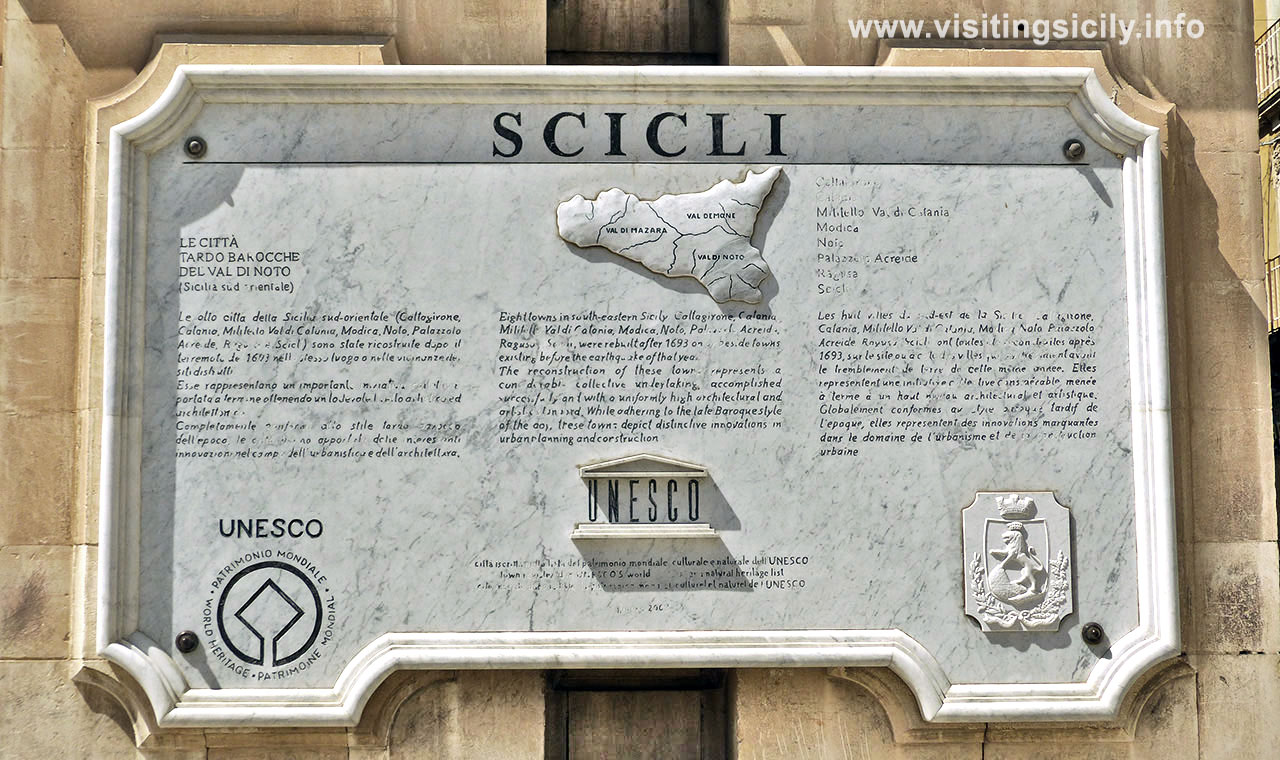Pearls of the late Baroque architecture in 'Val di Noto'
Modica
City of history, churches and... chocolate
Coming to Modica by car along the road 'SS 115' passing on the bridge Guerrieri, a viaduct 134 meters high over the valley in front of the low side of the city Modica Bassa, you can note immediately the urban layout running along the valleys formed by two old rivers converging into another larger one. The valleys cross the magnificent Iblean plateau and the rivers do not exist anymore, having been covered at the beginning of 1900 to create the main streets of the city. As other cities of Val di Noto and South-East of Sicily Modica has been destroyed by strong earthquakes in 1542, 1613 and, particularly, the terrific last one of 1693, and then rebuilt following the Late Baroque style, typical in that historical period. For this characteristic architecture Modica, as well Ragusa, Scicli and Noto have been appointed UNESCO site in 2002. The city is rich of art, history and culture with many grand churches and noble palaces. Every corner gives you opportunity to enjoy the eyesight: from the low side of the main street and the parallel side streets and alleys of the old Jewish quarter up to the elevation of San Giorgio church which dominates the city and the valley. Modica, which was the fourth important city of Sicily after Palermo, Messina and Catania from XV to the first half of XX century, is not only full of history, art and culture, but also folk traditions, local tasty cuisine and artisan pastries with the delicious 'mpanatigghi', cookies made with chocolate, almonds, cinnamon and filled with dried minced beef meat: a recipe of the nuns of XVI century. Of the same period also the special unique chocolate still made following an ancient Aztec recipe imported during the Spanish domination. There is no description for both... just come to Modica and enjoy!
*** Architecture Photography Itinerary
Ragusa Ibla
It appears like a Christian Nativity at night...
Ragusa Ibla, or simply Ibla, is the lower side of the new Ragusa city and located on a hill dominating the beautiful valley of the river Irminio. Coming from Ragusa the view over Ibla in the daylight looks like an historical flashback, as if time had stopped there; while from the panoramic Iblean garden the view over the Irminio valley inspires a sense of timeless magnificent nature. By walking along some narrow streets and alleys where the XXI century is recognizable only because of modern signs, doors and electric lights, since many houses and buildings still maintain the original architecture of XVIII century, in a municipality that is the one of the most efficient in the South of Italy. Ibla is not only one of the interesting UNESCO Late Baroque towns of 'Val di Noto' with countless historical palaces, rich churches fully decorated, hidden garden terraces, and seductive corners to visit during relaxing promenades, it is also a charming ancient style village where to enjoy cuisine, wines and artisanal pastries. Together with typical restaurants, taverns, pizzerias, wine bars, pastry shops the visitors can choose also some starred chef high level restaurants that offer menus with traditional specialities in modern and innovative interpretation together with delicious desserts and fine wine lists.
*** Architecture Photography Itinerary
Scicli
The town stretches harmoniously in the valley behind the Mediterranean sea...
Driving along the road from Ragusa Scicli suddenly appears as a mirage: an uniform expanse of houses with terracotta tiles roofs which fills the wide valley surrounded by the white stones of the Iblean plateau; now dry but long time ago furrowed by rivers. As other towns of the Southern Sicily the area of Scicli has been inhabited since the Eneolitico or Copper and Bronze Age (III millennium to XVIII - XV century b.C.) as stated from the findings in Grotta Maggiore. Historically Scicli has followed all the events of Sicily: domination of Greeks and Carthaginians, Romans and Byzantines, Vandals, Arabs, Normans, Swabians, French, Spanish, Borboni, until the Unity of Italy in 1861 and today. Destroyed during the earthquake of 1693 Scicli was rebuilt in the XVIII century in the Late Baroque style that we can admire today in the beautiful and relaxing city centre rich of churches (San Matteo, San Giovanni Evangelista, San Bartolomeo, San Michele...), decorated noble palaces (Beneventano, Fava, Spadaro...) and buildings in white limestone made in different historical periods, full of light both in the main streets and in the charming tiny alley. Beauty, light, quite, hospitality,... food & wines (again!), relaxing sandy beaches nearby complete the motivations to visit Scicli and spending there more days to discover its hidden treasures.
*** Architecture Photography Itinerary
Baroque tour Val di Noto - full day excursion (options and customized itinerary available on demand)
Modica walking tour
- San Pietro Church
- Chocolate maker shop
- San Giorgio Duomo
- Panoramic view over the city
Scicli walking tour
- San Bartolomeo church
- City Hall
- Palace Beneventano
- San Giovanni Evangelista church
- San Michele Arcangelo church
- Busacca square
Ragusa Ibla walking tour
- Panoramic view from the road
- Santa Maria le Scale church
- Iblean Garden
- San Giorgio portal
- San Giuseppe church
- San Giorgio Duomo
- Circolo di Conversazione
Price (private customized tour from Taormina):
- 1-3 people - from 350 Euro
Tickets and food/beverage NOT included
Please Click Here for information / price / booking

